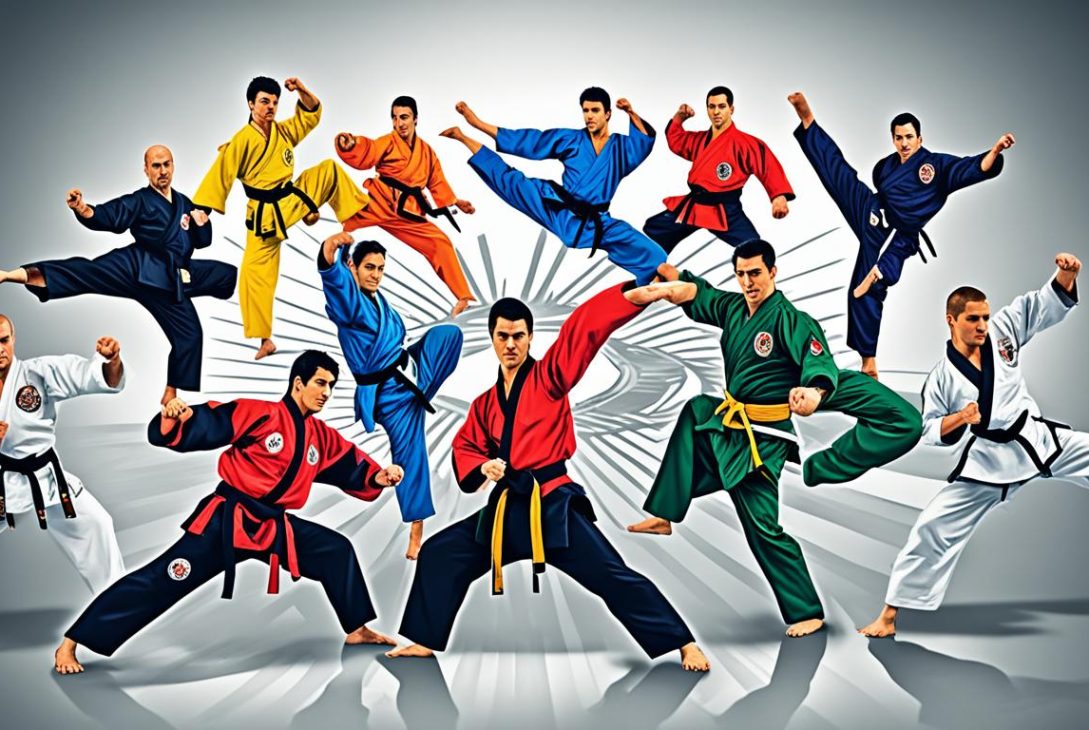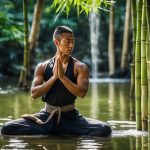Martial arts training offers numerous benefits, including physical fitness, self-defense skills, and personal development. Whether you are looking to improve your overall fitness, gain self-confidence, or learn practical self-defense techniques, finding the right martial art style is crucial. With so many options available, it can be hard to determine which style is best suited for you.
In this article, we will explore the top 5 martial arts styles in the world to help you find your perfect match. By understanding the characteristics and philosophies of each style, you can make an informed decision that aligns with your goals and interests.
Key Takeaways:
- Choosing the right martial art style is crucial for achieving your personal goals.
- Consider your interests, physical abilities, and desired outcomes when selecting a martial art.
- The top 5 martial arts styles discussed in this article are boxing, Muay Thai, Brazilian Jiu-Jitsu, wrestling, and mixed martial arts (MMA).
- Boxing focuses on striking techniques and footwork, while Muay Thai utilizes punches, kicks, knees, and elbows.
- Brazilian Jiu-Jitsu emphasizes ground fighting and submission holds, while wrestling emphasizes grappling and takedowns.
- Mixed Martial Arts (MMA) incorporates techniques from various martial arts disciplines.
The Benefits of Martial Arts Training
Martial arts training provides a holistic approach to health and fitness, offering numerous benefits that go beyond physical exercise. Whether you are looking to lose weight, gain self-confidence, or develop discipline, martial arts offers a complete physical and mental workout.
Weight Loss: Martial arts training techniques, such as high-intensity workouts and calorie-burning movements, can help you shed excess pounds and achieve your weight loss goals.
Improved Focus: The practice of martial arts requires concentration and mental discipline, enhancing your ability to focus and stay present in the moment.
Enhanced Social Interaction: Martial arts classes provide a supportive and inclusive environment where you can meet like-minded individuals, fostering friendships and a sense of community.
Leadership Skills: Martial arts training often incorporates elements of leadership development, teaching students how to take control, make decisions, and inspire others.
By regularly engaging in martial arts, you can experience these benefits while cultivating essential life skills such as self-discipline, respect, and perseverance.
“The training methods in martial arts are designed to not only build physical strength but also mental resilience and character traits that can be applied to daily life.”
Your Path to Personal Growth
Whether you choose a striking-based art like boxing or a ground-fighting style like Brazilian Jiu-Jitsu, martial arts training offers a multifaceted approach to self-improvement. These disciplines challenge your body and mind, helping you become more self-assured, focused, and disciplined.
Through consistent practice and dedication, you can develop attributes such as balance, flexibility, coordination, and agility. Moreover, martial arts training techniques help refine your motor skills, speed, and reflexes, all of which contribute to overall athletic performance.
Martial arts training equips individuals with practical self-defense skills, preparing them for real-life situations. Learning how to protect yourself can boost your confidence and provide peace of mind, making martial arts an appealing choice for individuals seeking personal security.
Discover the physical and mental benefits of martial arts training today and embark on a transformative journey towards personal growth and well-being.
| Benefits of Martial Arts Training | Description |
|---|---|
| Weight Loss | Aids in shedding excess pounds through high-intensity workouts. |
| Improved Focus | Enhances concentration and mental discipline. |
| Enhanced Social Interaction | Provides a supportive and inclusive community for socializing. |
| Leadership Skills | Develops qualities such as decision-making and inspiring others. |
Boxing – The Sweet Science of Striking
Boxing, known as the “Sweet Science,” is a time-honored combat sport that has stood the test of time. It is not only a thrilling spectator sport but also an intense form of physical training that combines power, speed, and agility. Boxing is a discipline that revolves around punches, footwork, and head movement, creating an artful dance between two opponents.
Boxing techniques focus on delivering precise punches with maximum impact while utilizing defensive skills to avoid incoming strikes. Footwork plays a crucial role in creating angles and maintaining distance, creating opportunities for offense and defense. Head movement helps boxers slip and evade punches, showcasing their ability to hit without getting hit in return.
Boxing training is a rigorous and demanding endeavor that enables athletes to develop extraordinary levels of upper body and leg strength. Through hours of conditioning, shadowboxing, bag work, and sparring, boxers enhance their speed, power, and endurance. The intense nature of boxing workouts promotes rapid weight loss and cardiovascular fitness, making it an excellent choice for those seeking to improve their overall physical well-being.
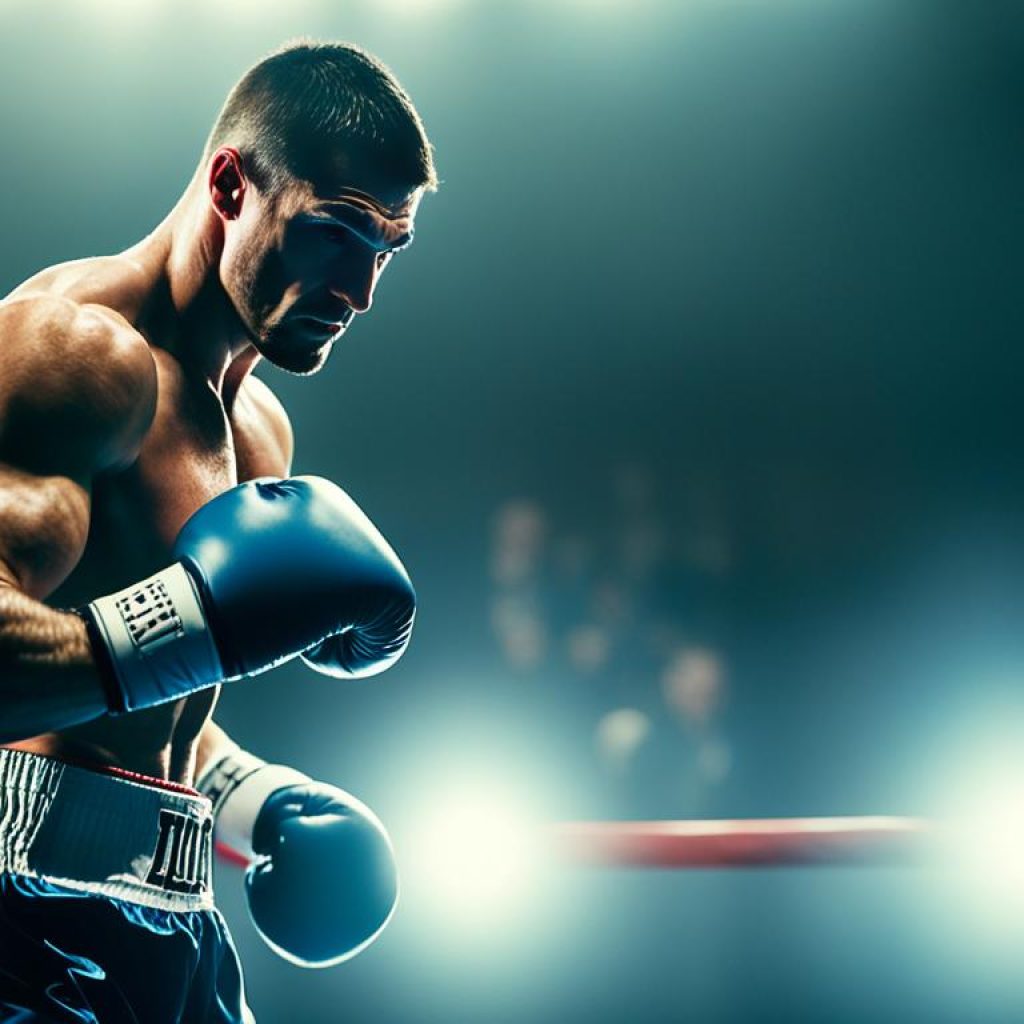
1. Jab
The jab is a fast, straight punch thrown with the lead hand. It is an essential tool in a boxer’s arsenal, used for various purposes such as measuring distance, setting up combinations, or keeping opponents at bay.
2. Cross
The cross is a powerful punch thrown with the rear hand, generating significant force by rotating the hips and transferring weight from the back foot to the front foot. It is a knockout punch that can stun opponents and change the course of a fight.
3. Hook
The hook is a curved punch delivered with a bent arm, targeting the sides of an opponent’s head or body. It is known for its devastating power and ability to generate knockout blows when landed cleanly.
4. Uppercut
The uppercut is an upward punch that is thrown from a lower position, often targeting the chin or solar plexus. It is a sneaky and effective punch that can surprise opponents and cause significant damage.
Mastering these techniques requires dedicated training, discipline, and guidance from experienced coaches. Through consistent practice and application, boxers refine their technique, timing, and accuracy, ultimately becoming formidable athletes in the boxing ring.
“Boxing is the ultimate challenge. There’s nothing that compares to testing yourself the way you do every time you step in the ring.” – Sugar Ray Leonard
Whether you aspire to step into the ring competitively or simply want to reap the physical and mental benefits of boxing training, the Sweet Science offers an exhilarating and rewarding journey that pushes your limits and helps you discover the strength within.
| Benefits of Boxing | Boxing Techniques | Boxing Training |
|---|---|---|
| 1. Weight loss | 1. Jab | 1. Conditioning |
| 2. Cardiovascular fitness | 2. Cross | 2. Shadowboxing |
| 3. Upper body strength | 3. Hook | 3. Bag work |
| 4. Improved coordination | 4. Uppercut | 4. Sparring |
Muay Thai – The Art of Eight Limbs
Muay Thai, also known as Thai boxing, is a powerful martial art that utilizes kicks, punches, knees, and elbows. With its roots in ancient Thai combat, Muay Thai has evolved into a popular sport and a highly effective form of self-defense.
What sets Muay Thai apart is its emphasis on maximum efficiency and raw simplicity. Practitioners are trained to strike with devastating force and accuracy, leveraging every part of their body – their fists, elbows, knees, and shins – to deliver powerful blows to their opponents.
Muay Thai techniques are versatile and adaptable, making it one of the most effective martial arts styles in the world. In addition to its offensive techniques, Muay Thai also focuses on defensive moves like blocks, parries, and evasive footwork.
Muay Thai training is a total body workout that offers numerous physical and mental benefits. Through rigorous drills, pad work, and sparring, practitioners develop:
- Strength: Muay Thai training builds strength in the upper and lower body, improving overall muscle tone and power.
- Speed: The explosive movements and constant striking in Muay Thai improve reflexes and enhance speed.
- Endurance: Conditioning exercises and intense training sessions help increase cardiovascular endurance and stamina.
- Mental focus and discipline: The intense concentration required in Muay Thai training helps develop mental discipline and focus.
| Muay Thai Techniques | Description |
|---|---|
| Kicks | Powerful strikes delivered with the shins, feet, or knees, targeting opponents’ legs, body, or head. |
| Punches | Straight punches, hooks, and uppercuts used to strike opponents with force and precision. |
| Knees | Devastating strikes delivered with the knee, often targeting the opponent’s body or head in close-quarter combat. |
| Elbows | Short-range strikes using the elbows, known for their incredible power and ability to cause significant damage. |
“Muay Thai is not just a martial art; it’s a way of life. It teaches you discipline, respect, and the importance of hard work. I’ve never felt stronger and more confident than when I step into the Muay Thai gym.”
– Natalie, Muay Thai practitioner
Brazilian Jiu-Jitsu – The Art of Ground Fighting
Brazilian Jiu-Jitsu (BJJ) is a martial art that specializes in grappling and ground fighting techniques. It is a highly effective self-defense system that focuses on using leverage and body positioning to gain an advantage over opponents.
In BJJ, the goal is to take the fight to the ground and utilize a combination of joint locks and chokeholds to incapacitate an opponent. Unlike other martial arts that rely on strikes and kicks, BJJ emphasizes technique and leverage, allowing practitioners to overcome strength and size disadvantages.
BJJ training is not only physically demanding but also mentally challenging. It requires focus, patience, and problem-solving skills, as practitioners must strategize and adapt to their opponent’s movements. Through consistent training, BJJ develops technical precision, core strength, and mental resilience.
One of the key aspects of BJJ is the use of positional control. Practitioners learn to gain and maintain dominant positions, such as mount, side control, and back control. This allows them to control an opponent’s movements and set up submissions or transitions to more advantageous positions.
Table:
| Benefits of Brazilian Jiu-Jitsu |
|---|
| 1. Develops technical precision |
| 2. Increases core strength |
| 3. Enhances mental resilience |
| 4. Improves problem-solving skills |
| 5. Provides practical self-defense skills |
BJJ is not only a martial art but also a competitive sport. It has gained popularity worldwide through events like the Ultimate Fighting Championship (UFC), where BJJ practitioners have showcased their skills against fighters of various styles.
With its focus on ground fighting and submission techniques, BJJ offers a unique and effective approach to self-defense. It is especially valuable in real-life situations where fights often end up on the ground.
For individuals seeking a martial art that emphasizes technique, strategy, and the ability to defend oneself against larger opponents, Brazilian Jiu-Jitsu is an excellent choice. With regular BJJ training, practitioners can develop a wide range of skills and improve their overall physical fitness.
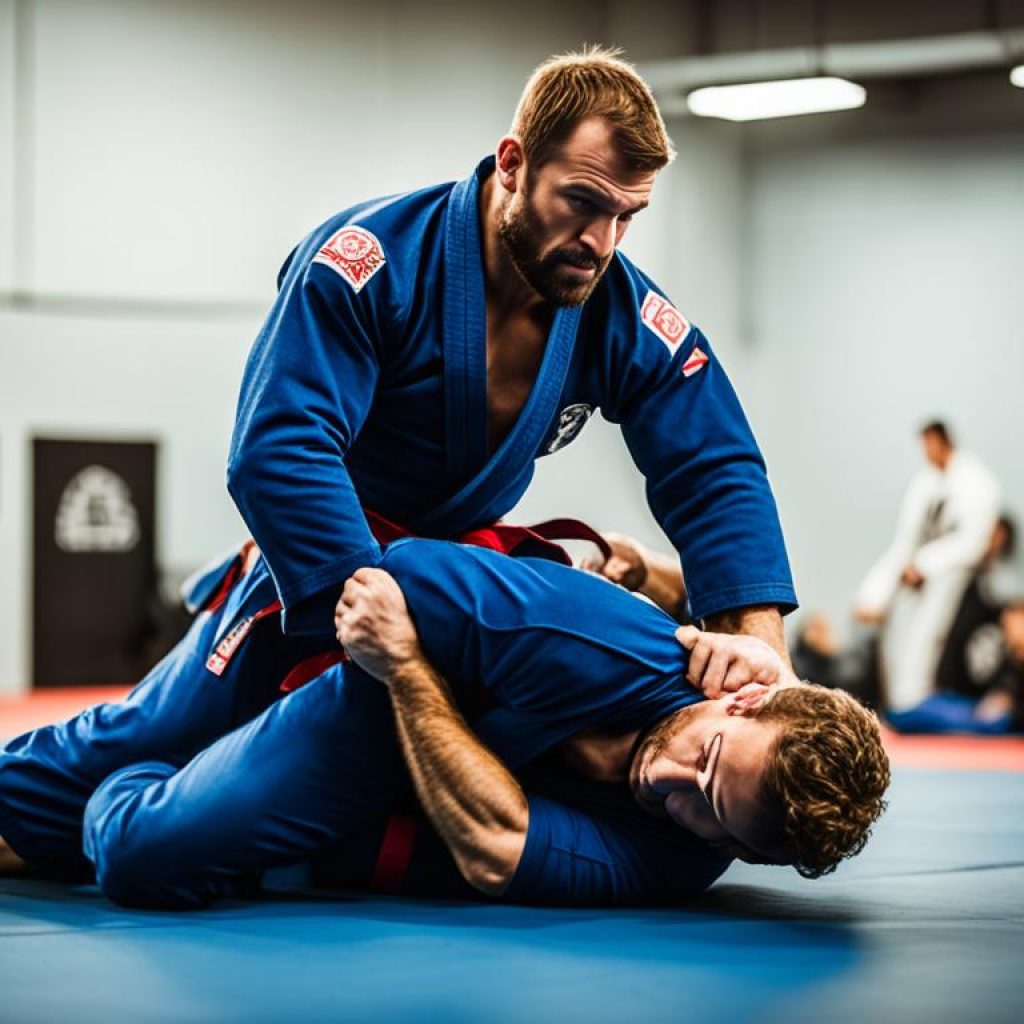
Wrestling – The Oldest Martial Art
Wrestling, one of the oldest martial arts, encompasses a range of techniques that involve grappling, throws, takedowns, and joint locks. This ancient combat style has a rich history dating back to ancient Greece and has evolved into a competitive sport enjoyed worldwide.
What sets wrestling apart is its emphasis on gaining a superior position over opponents and utilizing body weight as leverage. By honing their skills in close-quarters combat, wrestlers develop not only full-body strength and agility, but also a tactical advantage in controlling their opponents.
One of the key aspects of wrestling is its versatility. It can be practiced as a standalone martial art or incorporated into various other combat sports and martial arts disciplines. The foundational techniques learned in wrestling have had a profound impact on contemporary martial arts such as mixed martial arts (MMA).
Wrestling training is physically demanding, requiring wrestlers to build strength, endurance, and flexibility. It also cultivates mental discipline and focus, as wrestlers must strategize and adapt to their opponents’ movements in real-time.
Whether as a competitive sport or a means of self-defense, wrestling offers immense benefits to practitioners. Its techniques and principles provide a solid foundation for martial artists and combat athletes alike.
Key Techniques in Wrestling:
- Takedowns: Wrestlers use a variety of takedowns to bring their opponents to the ground, gaining an advantageous position.
- Grappling: Grabbing, clinching, and controlling an opponent’s body to maintain dominance and prevent escapes or counterattacks.
- Throws: Executing powerful throws to destabilize opponents and secure a dominant position.
- Joint Locks: Applying pressure to an opponent’s joints, such as the arm or leg, to force a submission or create openings for further attacks.
As the oldest martial art, wrestling continues to evolve and contribute to the development of other combat styles. Its practicality and effectiveness make it a cornerstone of many martial arts training regimens.
Mixed Martial Arts (MMA) – The Ultimate Combination
Mixed Martial Arts (MMA) is a dynamic combat sport that combines various martial arts disciplines, creating a comprehensive and versatile training experience. As the fastest-growing sport in the world, MMA has gained immense popularity for its exciting fights and showcase of diverse skills.
MMA incorporates striking techniques from disciplines like boxing, Muay Thai, and karate, allowing fighters to deliver powerful punches, kicks, and knee strikes. Additionally, it incorporates grappling and submission techniques from arts like Brazilian Jiu-Jitsu and wrestling, enabling fighters to control their opponents on the ground and secure victory through chokes and joint locks.
MMA training emphasizes the development of well-rounded skills, focusing on both stand-up and ground fighting. Fighters engage in intense conditioning exercises to enhance their strength, speed, agility, and endurance. They also practice drills and sparring sessions to refine their techniques and develop strategic thinking.
One of the key aspects of MMA is adaptability. Fighters must be able to seamlessly transition between different techniques and ranges, utilizing both striking and grappling to their advantage. This adaptability makes MMA an effective system for self-defense, providing practitioners with a wide range of tools to handle various combat situations.
Benefits of MMA Training
- Improved fitness: MMA training offers a full-body workout that enhances cardiovascular endurance, muscular strength, and flexibility.
- Self-defense skills: Learning MMA techniques equips individuals with practical self-defense skills that can be applied in real-life situations.
- Confidence and discipline: MMA training instills discipline, mental toughness, and self-confidence, empowering individuals both inside and outside the gym.
- Stress relief: Engaging in MMA training allows individuals to release stress and frustrations in a controlled and productive manner.
- Community and camaraderie: Joining an MMA gym provides a supportive community of like-minded individuals who share a passion for the sport.
Whether you aspire to compete in MMA or simply want to improve your fitness and self-defense skills, MMA training offers a comprehensive and rewarding experience. As you progress in your training, you’ll develop a deep understanding of various martial arts techniques and gain a profound appreciation for the physical and mental aspects of combat sports.
Now, let’s take a closer look at some essential MMA techniques and training strategies.
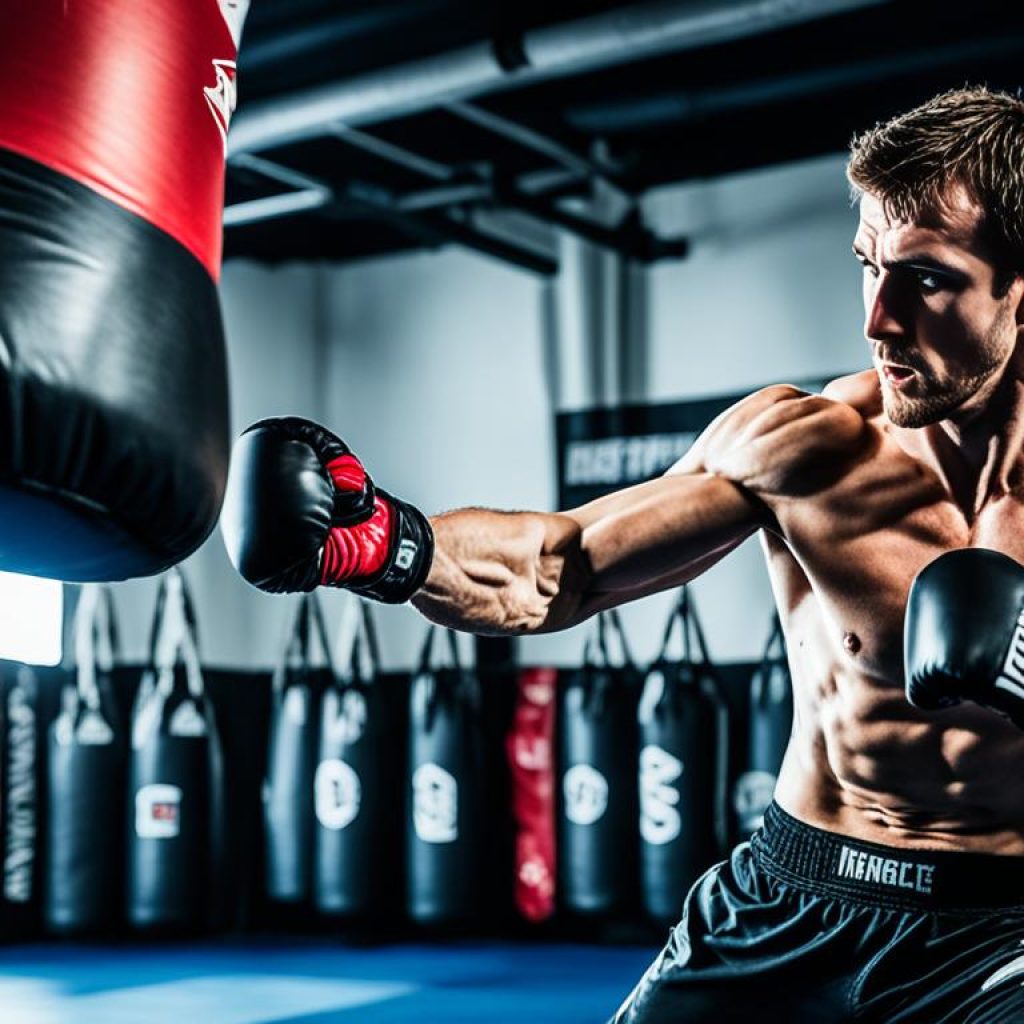
MMA Techniques
MMA techniques encompass a wide range of skills and strategies that are essential for success in the sport. Here are some key techniques used in MMA:
| Striking Techniques | Grappling Techniques |
|---|---|
| 1. Punches | 1. Takedowns |
| 2. Kicks | 2. Throws |
| 3. Knee Strikes | 3. Submission Holds |
| 4. Elbow Strikes | 4. Ground and Pound |
| 5. Clinching | 5. Escapes and Reversals |
These techniques form the foundation of MMA, and mastering them requires dedicated training and practice. By incorporating striking and grappling techniques, MMA fighters are able to create a well-rounded arsenal that keeps opponents guessing and maximizes their chances of victory.
Choosing the Right Martial Art for You
When it comes to selecting a martial art that suits you, it’s essential to consider your personal goals, interests, and physical abilities. Different martial arts offer unique benefits, whether you’re looking to learn self-defense, improve your fitness level, or enhance your overall well-being.
If your aim is self-defense, martial arts styles like Muay Thai and Krav Maga are worth exploring. Muay Thai, also known as the “Art of Eight Limbs,” teaches you how to use punches, kicks, knees, and elbows effectively. Meanwhile, Krav Maga focuses on practical self-defense techniques designed for real-life situations.
If your focus is on fitness and overall well-being, arts like boxing and Brazilian Jiu-Jitsu provide intense workouts that challenge your physical and mental limits. Boxing workouts are high-intensity and help improve cardiovascular endurance and upper body strength. Brazilian Jiu-Jitsu, on the other hand, focuses on ground fighting and develops core strength, flexibility, and mental resilience.
To find the martial art that best fits you, it’s recommended to try out different classes and consult with instructors who can guide you based on your goals and abilities. They can provide valuable insights into the training techniques, philosophies, and benefits associated with each martial art.
Remember, the choice of martial art is highly personal, and what works for one person may not work for another. Explore the available options, discover what resonates with you, and embark on a journey that aligns with your goals and aspirations.
Martial Arts Comparison and Finding Schools Near You
When it comes to choosing the right martial art for yourself, it’s essential to compare different styles and consider your personal preferences. Whether you’re interested in traditional martial arts or modern combat techniques, evaluating their techniques, training methods, and philosophies can help you make an informed decision.
Traditional Martial Arts vs. Modern Martial Arts
Traditional martial arts are deeply rooted in history and cultural heritage, emphasizing discipline, respect, and self-improvement. These styles follow established systems and often have a strong focus on form, technique, and preserving traditional values. On the other hand, modern martial arts incorporate techniques and principles from various disciplines, often aiming for practicality, adaptability, and efficient self-defense strategies.
“Traditional martial arts can provide a strong foundation in character development and personal growth, while modern martial arts offer a more dynamic and practical approach to combat.”
Researching Martial Arts Schools Near You
Once you’ve decided on the type of martial art you want to pursue, the next step is to find reputable schools or academies in your area. Conducting online research, asking for recommendations from friends or family, or consulting local directories can help you discover suitable options.
When researching martial arts schools, consider their instructors’ qualifications, their teaching methodology, and the overall atmosphere of the training environment. Pay attention to factors such as class schedules, location, and cost to ensure that the school fits your lifestyle and budget.
Visiting & Observing Classes
Visiting potential schools and observing classes is crucial to get a firsthand experience of the training atmosphere, teaching styles, and student interactions. This allows you to assess if the school aligns with your goals and preferences.
Talking to instructors, current students, and parents (if applicable) can provide valuable insights into the school’s culture, training intensity, and the level of dedication required. You can ask questions about the curriculum, class sizes, available training equipment, and opportunities for advancement.
Make an Informed Decision
By comparing martial arts styles, conducting thorough research on local schools, and visiting them in person, you can gather the necessary information to make an informed decision. Consider your goals, the training environment, and the philosophy that resonates with you the most. Remember that finding the right martial arts school is essential for your journey towards self-improvement, personal growth, and physical fitness.
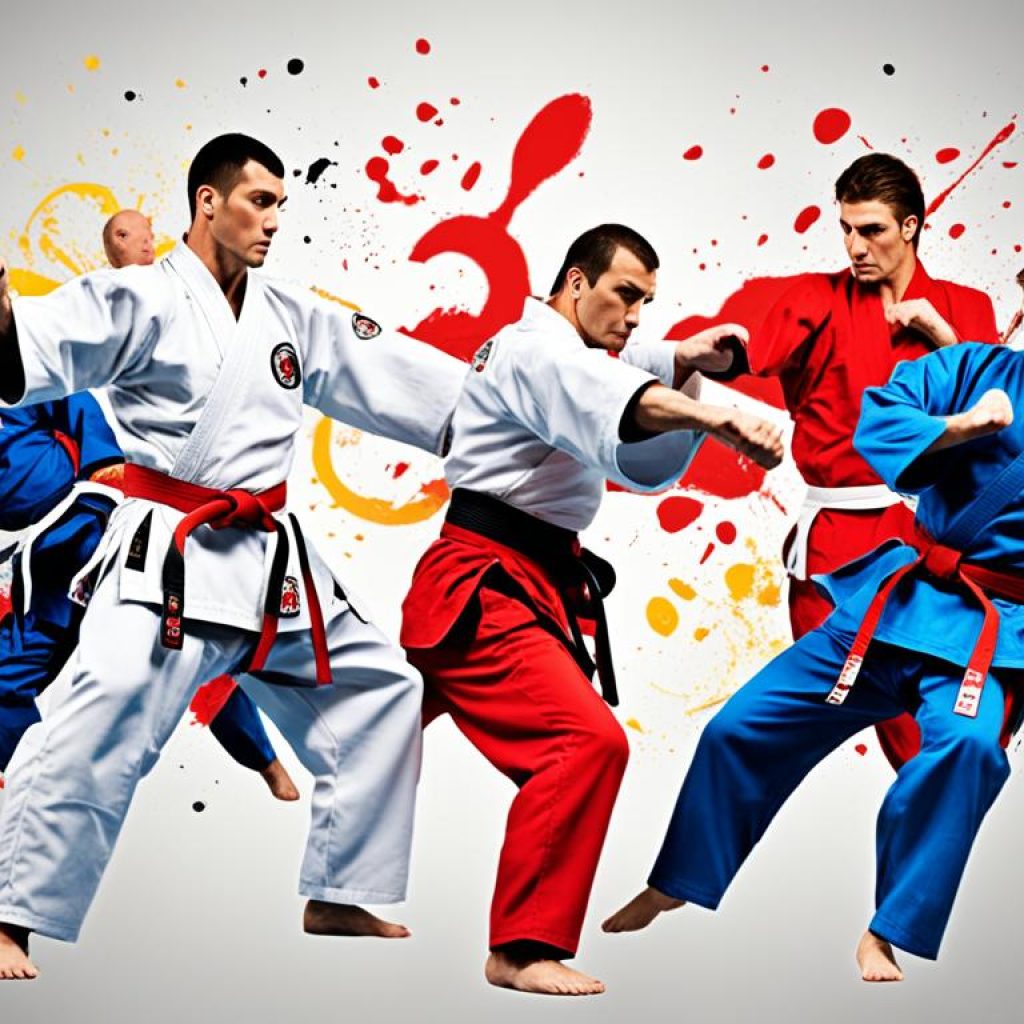
| Traditional Martial Arts | Modern Martial Arts |
|---|---|
| Deeply rooted in history and culture | Incorporates techniques from various disciplines |
| Emphasizes discipline and respect | Focuses on practical self-defense strategies |
| Preserves traditional values and forms | Prioritizes adaptability and efficiency |
| Character development and personal growth | Dynamic and modern training methods |
Conclusion
Deciding on the best martial art for you ultimately depends on your individual goals, preferences, and physical capabilities. With a wide range of disciplines to choose from, including boxing, Muay Thai, Brazilian Jiu-Jitsu, wrestling, and MMA, you have the opportunity to find the style that aligns with your needs.
For those seeking an intense striking art that focuses on punches and footwork, boxing is an excellent choice. If you are looking to utilize multiple limbs and maximize your efficiency, Muay Thai’s incorporation of kicks, punches, knees, and elbows may be the best fit. Brazilian Jiu-Jitsu offers a ground-based approach with a focus on grappling and submission techniques, while wrestling emphasizes grappling and throws. Mixed Martial Arts (MMA) provides the ultimate combination of various martial arts disciplines, offering a comprehensive training experience.
As you make your decision, it’s important to commit to regular training and find a supportive martial arts community. By dedicating yourself to consistent practice and surrounding yourself with like-minded individuals, you can experience personal growth, improved fitness, and enhanced self-confidence.
FAQ
What are the benefits of martial arts training?
Martial arts training offers numerous benefits, including physical fitness, self-defense skills, weight loss, improved focus, enhanced social interaction, leadership skills, and personal development.
What is boxing?
Boxing is one of the oldest and most efficient combat sports, focusing on punches, footwork, and head movement. It is a high-intensity workout that promotes rapid weight loss and cardiovascular fitness.
What is Muay Thai?
Muay Thai, also known as Thai boxing, is a powerful martial art that utilizes kicks, punches, knees, and elbows. It is known for its maximum efficiency and raw simplicity, making it one of the most effective styles in the world.
What is Brazilian Jiu-Jitsu?
Brazilian Jiu-Jitsu is a martial art that focuses on grappling and ground fighting. It uses leverage and body weight to gain advantageous positions and execute submission maneuvers, such as chokes and joint locks, to incapacitate opponents.
What is wrestling?
Wrestling is one of the oldest martial arts that involves grappling techniques, throws, takedowns, and joint locks. It emphasizes gaining superior position over opponents and utilizing body weight as leverage.
What is Mixed Martial Arts (MMA)?
Mixed Martial Arts combines various martial arts disciplines, integrating striking, grappling, and ground fighting techniques. It offers a well-rounded training experience that prepares fighters for real combat scenarios.
How do I choose the right martial art for me?
When choosing a martial art, consider your personal goals, interests, and physical abilities. If your aim is self-defense, styles like Muay Thai and Krav Maga may be suitable. For fitness and overall well-being, arts like boxing and Brazilian Jiu-Jitsu offer intense workouts.
How do I compare different martial arts styles?
To compare different martial arts styles, assess their techniques, training methods, and philosophies. Consider if you prefer traditional or modern approaches, and research reputable schools or academies near you. Visiting these schools, observing classes, and speaking with instructors and students can help you make an informed decision.
What is the conclusion on the top martial arts styles?
Deciding on the best martial art for you ultimately depends on your individual goals, preferences, and physical capabilities. Whether you choose boxing, Muay Thai, Brazilian Jiu-Jitsu, wrestling, or MMA, committing to regular training and finding a supportive martial arts community can lead to personal growth, improved fitness, and self-confidence.
and personal development. whether you are looking to improve your overall fitness finding the right martial art style is crucial. with so many options available gain self-confidence in this article including physical fitness it can be hard to determine which style is best suited for you. martial arts training offers numerous benefits or learn practical self-defense techniques self-defense skills top 5 martial arts styles - find your best match! we will explore the top 5 martial arts styles in the world to help you find your perfect match. by understanding the characteristics and philosophies of each st you can make an informed decision that aligns with your goals and interests.
Last modified: February 27, 2024

